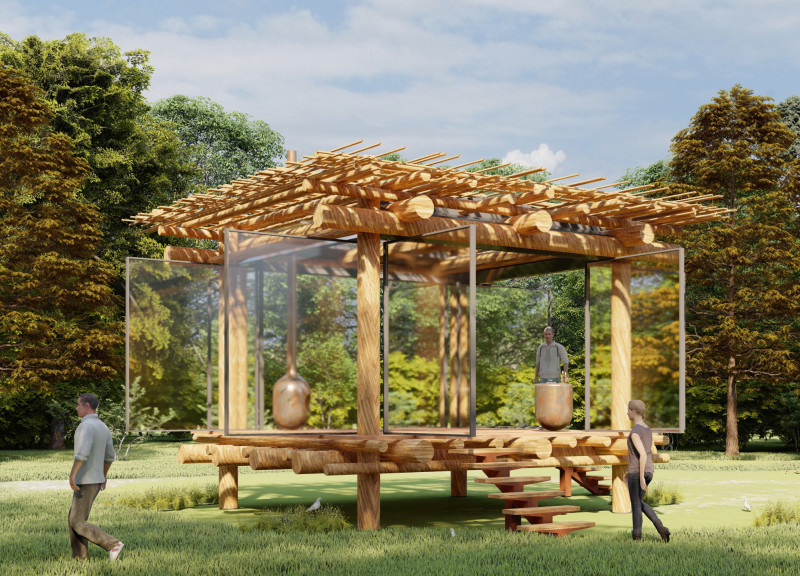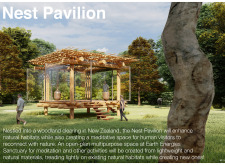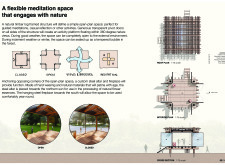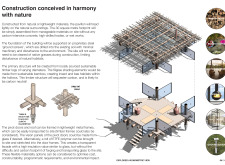5 key facts about this project
The Nest Pavilion is a contemporary architectural project designed as a multifunctional space within a wooded clearing in New Zealand. It serves as a hub for meditation, reflection, and interaction with nature. The design focuses on creating a connection between users and their environment, facilitating experiences that promote well-being. Its overarching architecture embodies the concept of a nest, offering shelter while integrating seamlessly with the natural landscape.
The pavilion's primary function is to provide a flexible space that accommodates various activities, including gatherings and quiet contemplation. The open-plan structure encourages fluid movement and interaction with the surrounding landscape. Generous use of transparency through pivot doors enhances the connection to nature while allowing for adaptable use throughout the seasons. The pavilion's unique roof structure, composed of layered timber and bamboo, not only serves functional purposes such as shading and weather protection but also creates additional habitats for local wildlife.
The overall design emphasizes sustainability and ecological balance. The choice of local, sustainable materials such as timber logs, bamboo, and steel reflects a commitment to reducing the environmental footprint. The incorporation of ground screws as foundation elements minimizes site disturbance and maintains the integrity of the existing woodland.
Innovation in biodiversity integration sets the Nest Pavilion apart from typical architectural projects. By carefully designing features that support local flora and fauna, the pavilion functions as a sanctuary, promoting ecological health alongside human activity. Furthermore, the architectural approach emphasizes flexibility, allowing the space to adapt to the users' needs, whether for solitary meditation or communal activities.
The design of the Nest Pavilion also includes a custom altar and a hanging fireplace, providing essential focal points in the interior space. The altar facilitates various spiritual practices, while the fireplace ensures warmth and comfort, making the structure usable in colder months. The use of sustainable materials, including weathering steel and transparent polymers, enhances the longevity of the building while minimizing its visual impact on the environment.
To explore the architectural plans, sections, and designs further, interested readers are encouraged to delve into the project presentation. A detailed examination of the architectural ideas and methodologies employed will provide deeper insights into the Nest Pavilion and its innovative approach to harmonizing architecture with nature.


























